Everyone agrees that Metro is an excellent mode of public transport. It improves connectivity and is good for the city. It is environmental-friendly.
However, we have lost quite a number of trees at the time of Metro construction and we need to take some steps to regain the lost greenery.
Most of Namma Metro is not underground. Bare metro pillars and beams have become an eyesore of our so-called Garden City. There have been news reports of BMRCL planning some vertical gardens, in which a huge metal frame holds a large number of small containers in which a variety of small plants are planted. The plants cover the mesh to give a green look. This is well-intended.
However, setting up a vertical garden and maintaining it is an expensive affair. These plants have to be watered regularly. So a watering system with tanks, pumps and sensors etc is essential. If watering is not done for a few days most of the plants would wither out and will have to be replaced.
The reality of our concrete jungle is pretty harsh not only for human beings but also for plants. So it is no wonder that this experiment wasn’t really a success, for various reasons. Perhaps efforts are still going on this direction, but fact of the matter is that it is very cumbersome and expensive to maintain vertical gardens. In other words it is not practical.
In this context, I would like to suggest a different approach to have greener metro. I suggest that we grow beautiful creepers and climbers on metro piers and beams. Most of these creepers are very hardy. In Bengaluru climate, once they are established, they don’t require any watering as these plants can get all the water and nutrients from the ground. Maintenance needed would be minimal such as some pruning. Most of the creepers can live for years together and can give beautiful blooms year after year. Unlike vertical gardens these plants would also give nesting space for local birds.
There are a variety of climbers which could be tried by BMRCL. You can see several of these climbers in the small but beautifully green campus of the Indian Statistical Institute, just next to Jnanabharathi Campus of Bangalore University. All the pictures in this article except that of bougainvillea are from this Campus. You can see drab walls of government buildings covered with climbers of various kinds.

Common Climbers: To begin with here are some climbers which are extremely easy to grow and give beautiful blooms.
Bougainvillea: Undoubtedly this would be the first candidate if one is to try a climber on Metro pillars. The plant is versatile. It can be a bush or a climber as you please. It is a rough and tough one, well-suited for our weather. It has hundreds of varieties, so one may opt for different colors for different stretches. It is very easy and cost-effective to procure, as almost every nursery in Bangalore would have it. In this picture you can see bougainvillea on roadside in a city of Israel.

Rangoon Creeper (Combretum indicum): This is also a woody climber which would require no maintenance once it is established. It gives beautiful fragrant flowers in summer with flowers changing color from white to pink to red.
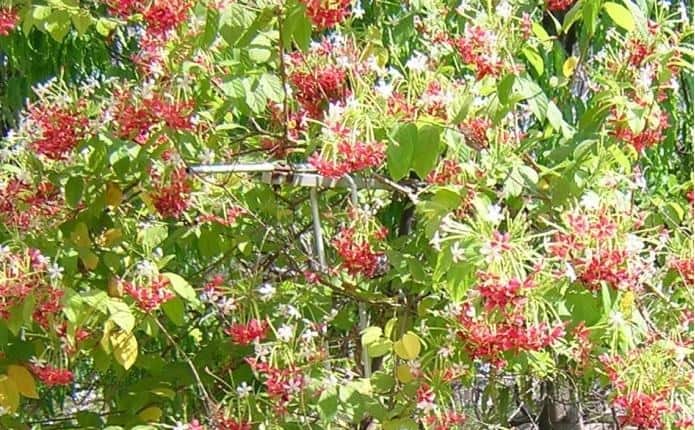
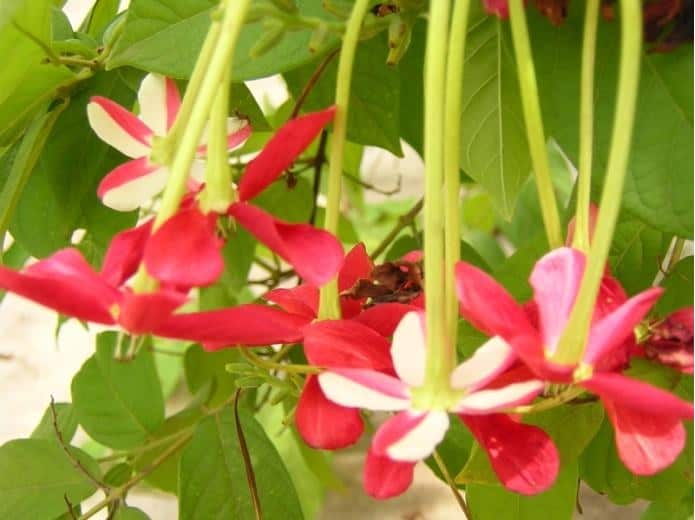
Orange Bignonia (Pyrostegia venusta): This provides quite a display when in bloom. It is not uncommon in gardens of Bengaluru.
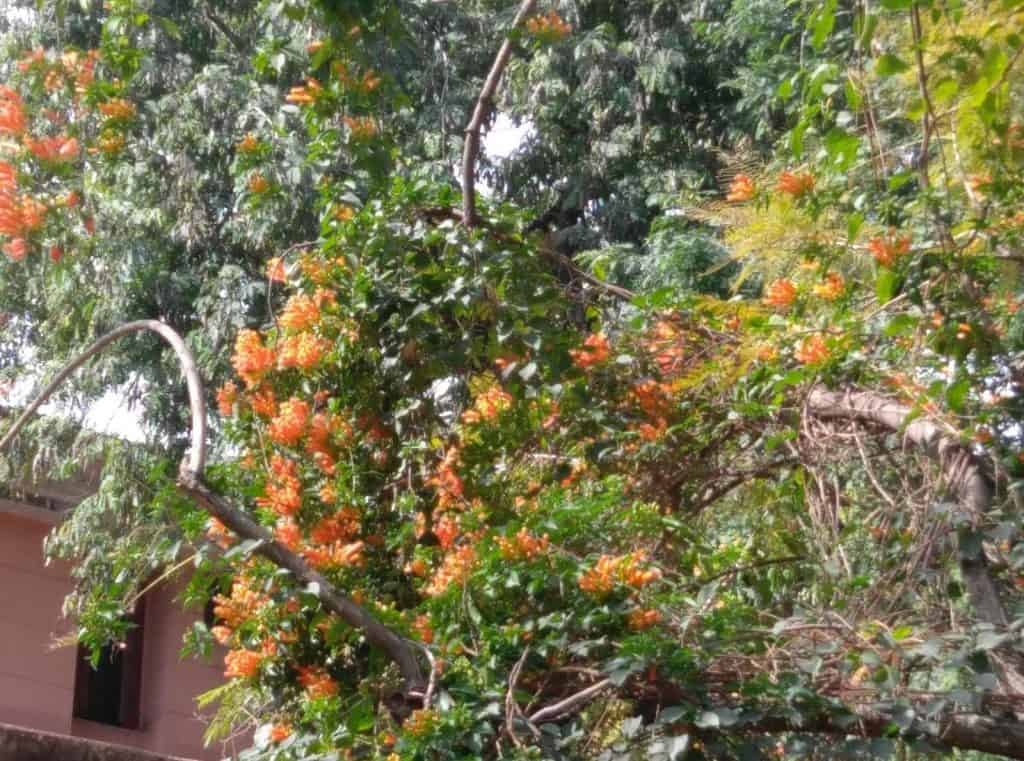
Garlic creeper (Mansoa alliace): It blooms multiple number of times in a year. The leaves smell of garlic when crushed. It is easy to grow and is very hardy.
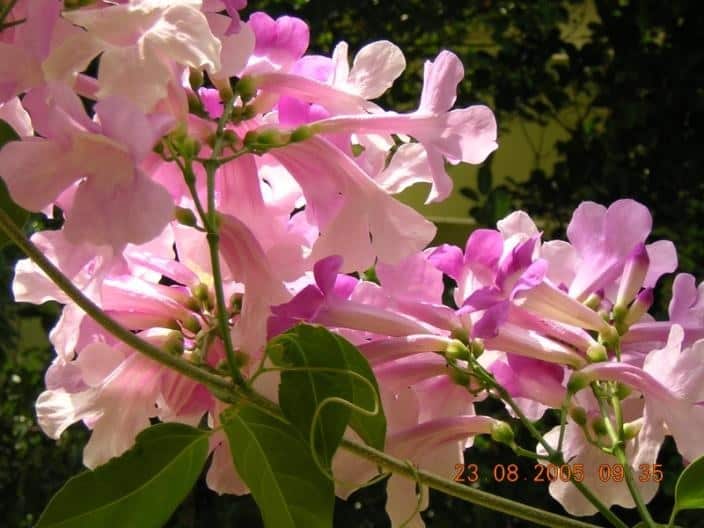
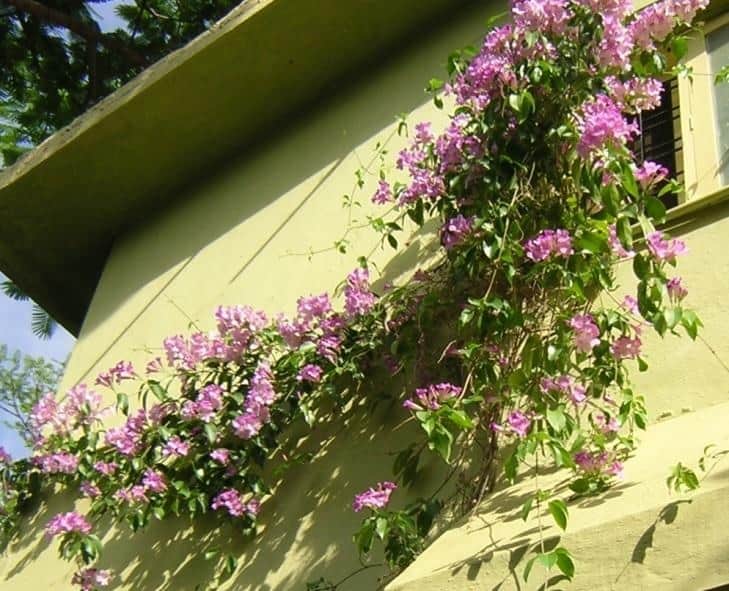
Useful climbers: Apart from flowering creepers one may also think of growing some climbers which are useful in other ways. Here are two possibilities.
- Passion fruit (Passiflora edulis): This tropical climber can be grown easily from seeds or cuttings and has very fast growth. It can climb up through its tendrils. It has pretty clock shaped blue flowers and edible fruits. Ripe fruits fall off on their own and children would love them.
- Shikakai /Seege (Acacia concinna): The pods of this climber is traditionally used in haircare. It would grow vigorously like a weed. One problem with this climber is that it is very thorny and so nobody wants to grow it in gardens. However, it should be harmless if it goes up and covers unsightly metro beams.
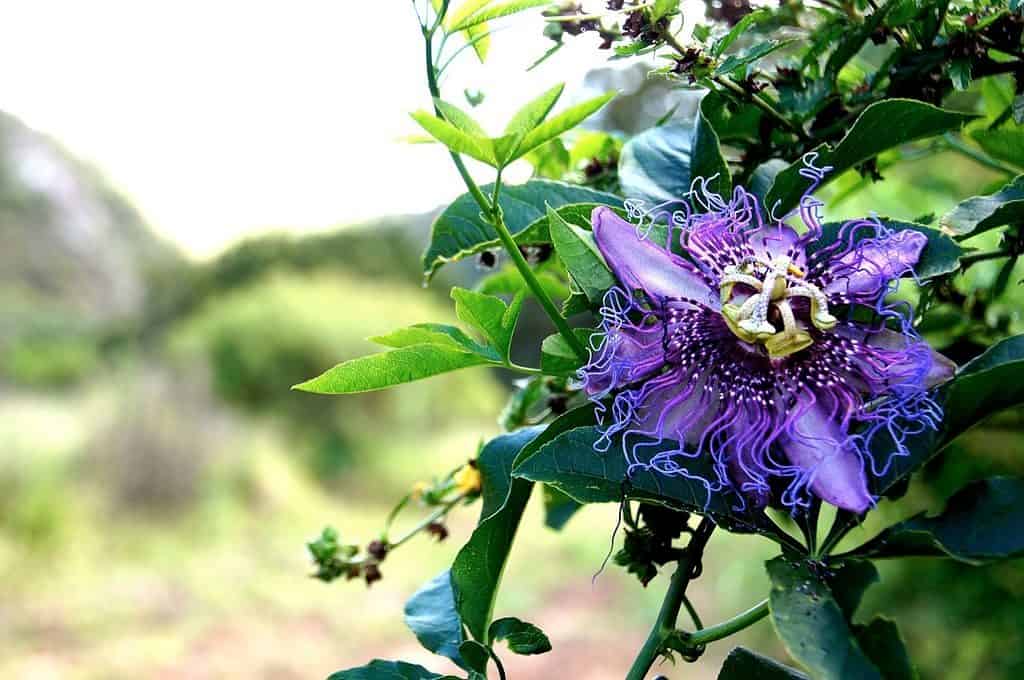
Lianas of western ghats and Himalayas: There are a large numbers of woody climbers in our forests known as lianas. These climbers go up the biggest of trees and may cover large areas. Unfortunately due to habitat loss we are losing many of them. Most gardeners and plantation owners shun them as these climbers can dominate and cover large areas, stunting the growth of neighbouring plants. It would be excellent if Namma Metro can grow and showcase such plants. Here is a sample of two which can easily survive in Bangalore.
- Maloo creeper (Phanera vahlii): Apparently this is the largest woody climber in India. Gives large bunches of white flowers.
- Sea bean (Entada rheedei ): Another large climber with very interesting huge pods containing hard, smooth and shiny seeds.
Exotic plants: At those places like M G Road, where plants can be taken care of much better, one can grow exotic climbers with fancy flowers such as Mysore Manjari (Thunbergia mysorensis) or Jade flower (Strongylodon macrobotrys).
The list given here is just for illustration purposes. There are literally hundreds of varieties of creepers and climbers which can be grown with little care. They can be rooted in the median. It is also possible to have some of these creepers planted in big containers below the Metro line and let them hang down the beams, with proper watering arrangements. By doing this, the plants would get ample sunlight right from the beginning and will be saved from stray cattle and irresponsible citizens.
Some kind of wire mesh on the cement structures would be needed, which won’t be expensive. Our city definitely has enough gardeners and experts on such plants.
Can Namma Metro give this suggestion due consideration and take up planting climbers under Metro track this monsoon season at least on a trial basis?
Well written. Wish NammaMetro authorities will take the lead